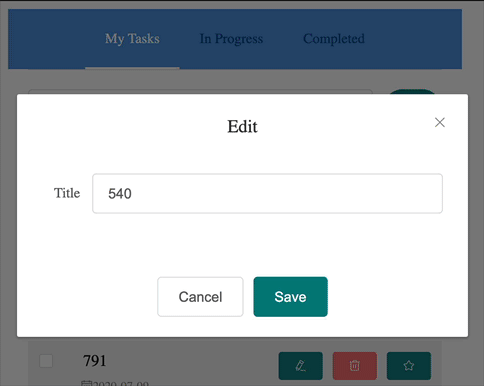Element UI Dialog 元件自適應的方法
好久不見!最近在學習使用 Element UI 的這個框架,發現其實滿方便的,但好像也有很多坑 !? 這邊筆記一下如何讓 Dialog 元件自適應….
首先先在 <el-dialog> 標籤中綁定 width 到一個變數中
<template>
<el-dialog title="Edit" center :visible.sync="isEdit" :width="dialogWidth">
<el-form :model="editTmp">
<el-form-item label="Title" :label-width="formLabelWidth">
<el-input v-model="editTmp.title" autocomplete="off"></el-input>
</el-form-item>
</el-form>
<div slot="footer" class="dialog-footer">
<el-button @click="isEdit = false">Cancel</el-button>
<el-button type="primary" @click="eventSave">Save</el-button>
</div>
</el-dialog>
</template>
在 data 中建立 dialogWidth 變數並設定預設參數,接著在 mounted 中加入當 window.onresize 事件觸發時隨著瀏覽器寬度調整,當瀏覽器寬度大於 dialogWidth 變數的數值時, Dialog 保持不變,反之若小於時則保持 100% 的寬度
export default {
name: "Home",
data() {
return {
formLabelWidth: "50px",
dialogWidth: "350px",
};
},
mounted() {
// Element UI Dialog 自適應
window.onresize = () => {
return (() => {
this.setDialogWidth();
})();
};
},
mutations: {
setDialogWidth() {
let windowSize = document.body.clientWidth;
const defaultWidth = 450; // 預設寬度
if (windowSize < defaultWidth) {
this.dialogWidth = "100%";
} else {
this.dialogWidth = defaultWidth + "px";
}
},
}
打完收工,效果圖如下

Leave a comment